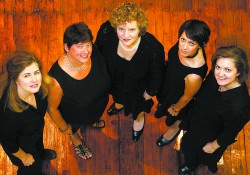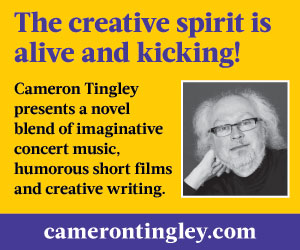In december 2012 a photo essay appeared in the New York Times showing the destruction of a piano abandoned on a New York sidewalk. A series of successive photos told a putatively moving story, accompanied by music sombre and dramatic by turns, in which the piano was stared at, played idly by passersby and ultimately destroyed and carted away.
 What was more illuminating than the photos themselves were the comments posted online as the essay travelled over the internet. A number could be paraphrased as “What a sad comment on the current state of the arts, as the piano is trashed just like the culture.” The mixture of ruefulness and self-satisfaction was galling.
What was more illuminating than the photos themselves were the comments posted online as the essay travelled over the internet. A number could be paraphrased as “What a sad comment on the current state of the arts, as the piano is trashed just like the culture.” The mixture of ruefulness and self-satisfaction was galling.
In art and everywhere else, the good old days were never good, folks. Culture is always in flux, and time alters our view of art that is initially considered trashy or meretricious — like Shakespeare, Delta blues or cable television — into something elevated and timeless. Anyone nostalgic for an Elysian epoch in which classical culture was ascendant throughout the West and there was a piano, a violin and a Beethoven score in every humble home, simply hasn’t read any history.
In 2009 American music historian Elijah Wald published How the Beatles Destroyed Rock ‘n’ Roll: An Alternative History of American Popular Music. Once you get past the misleadingly quarrel-picking title (good for generating a bit of buzz, anyhow), this book has many excellent insights about how we listen to music, and how our perception of it evolves over time.
Wald makes the point that the ability to record music irrevocably changed our experience of it. John Phillip Sousa coined the term “canned music,” and felt that recorded music would degrade people’s ability to create it themselves. In many ways he was correct. Wald states: “virtually all dancing is now commonly done to recordings.” Singing of lullabies at home and at religious services, two areas in which live music still functions, can easily be replaced with recorded music.
At the same time, Wald observes that we now have instant access to “the finest artists, alive or dead, who have ever been recorded anywhere in the world, and we can hear it whenever we want, wherever we go, in whatever order and whatever volume we please.” This has given modern musicians “a breadth of experience and created a wealth of fusions that would have been unimaginable” in the past. From the point of view of cross-cultural awareness and opportunity, you could argue that the good old days are right now. Let us look at the stylistic mixture of several concerts coming up in the next few weeks.
TCC on the move: Perhaps I am not especially sympathetic to pianos, abandoned or otherwise, because I regard them as such a poor instrument on which to introduce young children to music. When asked by parents about the advisability of beginner piano lessons, I usually start ranting about the dangers of subjecting children’s formative musical experiences to the piano’s complicated key mechanism and rigid tuning system. If the parents are still listening after an hour, I finish with a diatribe about singing and movement’s centrality to the development of musical skill.
My apologies, piano teachers. But what better support can I offer for these heretical notions than the excellent Toronto Children’s Chorus, which is helping raise the next generation of singers and choral conductors. They combine music and movement as they perform “Dance All Around the World” on February 23.
Sondheim Vivace: American musical theatre icon Stephen Sondheim’s brilliant scores are a resource that more choirs should explore. Choral versions of musical theatre songs lean towards the classic composers or the mid-20th century, or the juggernaut mega-musicals of the 1980s. Sondheim’s work is searching and complex, witty and sardonic, and a good choral performance of it can be rewarding for both audience and singers. Conductor and singer Linda Eyman is responsible for a busy pocket of Toronto music making — she conducts four separate choirs and maintains a private singing studio as well. One of her ensembles, Vivace Vox performs “Sondheim! Sondheim!”on February 24, including selections from Company, Into the Woods, Follies and Sweeney Todd, among others.
Bell’Arte’s 25th: Toronto’s Bell’Arte Singershas drawn many excellent Toronto singers into its ranks. They celebrate a quarter century of work with their “25th Anniversary Concert: Memories and Reflections” on March 2.
Gesualdo Sinister: In an art form that does not lack for odd characters, Italian Renaissance composer Carlo Gesualdo is one of the oddest and most sinister figures in history. The title of the Tallis Choir’s March 2 concert, “Gesualdo: Murderer & Musician,” states the case straightforwardly. I won’t relate the shocking story here. Instead, attend the concert to find out more, and don’t cheat by resorting to an online check. Gesualdo’s music is always worth hearing live — its anarchic harmonic shifts and haunting word painting are a high point of Renaissance madrigal writing. Some of his work sounds uncannily like some of the choral compositions of 20th century Austrian composer Ernst Krenek, and many modernist composers were drawn to his madrigals .
Rossini Solenelle (times two): Toronto audiences have a rare opportunity to hear Rossini’s Petite Messe Solenelle not once, but twice. The Toronto Mendelssohn Choir performs the work on February 9, and the Toronto Classical Singers sing it on March 3. The work was written in 1864, four years before the famed opera composer’s death. It is an engaging piece, first performed with a quirky piano and harmonium accompaniment. Rossini orchestrated it later on. Fans of bel cantoItalian vocal style will find much to love, especially the tenor solo showstopper, “Domine Deus.”
Magdalena goes modern: Schola Magdalena is a chamber ensemble of women’s voices, conducted by choral multi-tasker Stephanie Martin. Usually focused on early music , they make a foray into modern works in a concert sponsored by NUMUS, a very good contemporary music organization based out of Waterloo. This concert takes place on February 7 in Waterloo and again at the Church of St. Mary Magdalene in Toronto.
These are only a few of the excellent concert choices available in the coming weeks — please check out the listings and find out about the many other excellent choirs around.
Ben Stein is a Toronto tenor and theorbist. He can be contacted at choralscene@thewholenote.com. Visit his website at benjaminstein.ca.



